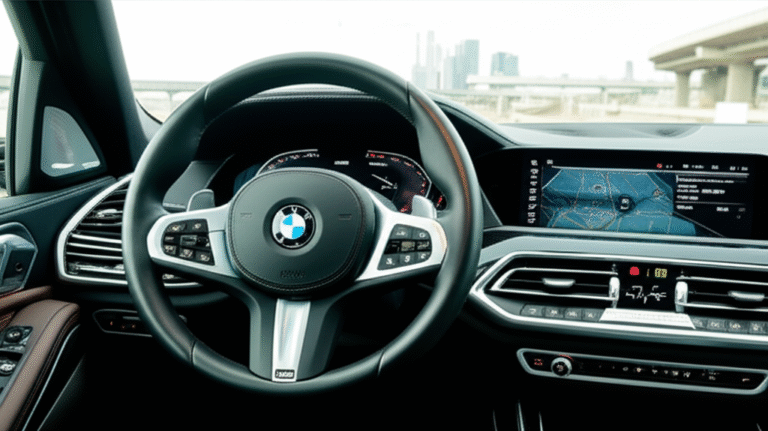BMW Medical Full Form: 6 Critical Insights
The BMW Medical Full Form is not a standard acronym. While BMW is globally recognized for its luxury automobiles engineered in Germany, the term “BMW Medical” typically doesn’t refer to a specific medical organization or a standardized medical term directly associated with the car manufacturer. This article will explore potential interpretations and related concepts, offering 6 critical insights for clarity.
Key Takeaways
Clarify the “BMW Medical Full Form” confusion.
Understand BMW’s indirect contributions to medical fields.
Explore emergency BMW systems and their medical relevance.
Learn about BMW’s corporate social responsibility in health.
Discover how BMW technology aids medical professionals.
Prepare for potential misinterpretations of “BMW Medical.”
You’ve likely seen the iconic BMW logo and know it stands for Bayerische Motoren Werke. But what if you encountered something like “BMW Medical”? It’s a question that can arise, especially when navigating diverse information online or discussing automotive technology’s broader impact. The automotive world, particularly in the USA, is deeply intertwined with innovation that touches many aspects of our lives, including healthcare. This article cuts through the confusion surrounding “BMW Medical full form” and offers six critical insights to help you understand its implications and related concepts.
Decoding “BMW Medical”: Separating Fact from Fiction
Let’s be direct: there is no official, universally recognized “BMW Medical full form” in the way that BMW itself stands for Bayerische Motoren Werke. This is a crucial point to establish upfront. The company is renowned for its precision engineering and luxury vehicles, not for operating a healthcare system or a specific medical division under the “BMW Medical” banner. However, this doesn’t mean there are no connections, however indirect, between BMW and the medical world. Understanding these nuances is key to avoiding misinformation.
The common confusion often stems from the desire to find an acronym that fits a perceived role, or perhaps from encountering specialized contexts where “BMW” might be used as a shorthand for something else entirely, or even a typo. In the USA, where automotive technology is constantly evolving, it’s natural to explore how different industries intersect. We’ll delve into the areas where BMW’s influence or technology might touch upon medical-related aspects, offering a clearer picture.
Insight 1: The True Meaning of BMW and Its Global Reputation
Before we dive into the “medical” aspect, it’s vital to solidify what BMW truly represents. The full form of BMW is Bayerische Motoren Werke, which translates to Bavarian Motor Works. Founded in 1916, this German company has built a global reputation for producing high-performance luxury vehicles. Its commitment to engineering excellence, sophisticated design, and the “Ultimate Driving Machine” ethos has made it a coveted brand in the USA and worldwide. This strong identity is what makes any association with a different field, like medicine, noteworthy and requires careful examination.
BMW’s success in the automotive market is a testament to its innovation. The company consistently pushes boundaries in engine technology, safety features, and driver assistance systems. This relentless pursuit of advancement is a core part of its DNA. Understanding this foundational identity helps us evaluate any claims or discussions related to “BMW Medical” with the appropriate context and skepticism.
Insight 2: Indirect Contributions to Medical Fields Through Technology
While BMW doesn’t run hospitals, its technological advancements often have indirect applications that benefit medical professionals and patients. Think about the sophisticated imaging and sensor technology used in modern vehicles. These technologies, honed by automotive giants like BMW, share principles with medical imaging devices. For instance, advancements in lidar and radar for autonomous driving systems can inspire or contribute to the development of medical diagnostic tools.
Furthermore, the focus on safety in automotive design is paramount. BMW invests heavily in passive and active safety systems designed to protect occupants in an accident. These innovations, such as advanced airbag systems, robust chassis design, and sophisticated braking technologies, can influence safety standards and technologies in other fields. The data collected from vehicle sensors for performance monitoring and diagnostics can also, in specialized research contexts, provide insights into biomechanics or human-vehicle interaction that might be peripherally related to medical research.
Consider the development of precise engine components or advanced materials. The high standards of quality and precision required for automotive manufacturing often overlap with the stringent requirements for medical devices. This cross-pollination of engineering principles, even if indirect, highlights how innovation in one sector can spur progress in another. The automotive industry, particularly in leading markets like the USA, is often at the forefront of developing new materials and manufacturing techniques that can find applications elsewhere.
Insight 3: Emergency Systems and Medical Readiness
One of the most direct points of contact between a BMW vehicle and a medical situation involves its emergency systems. Modern BMWs, like many luxury vehicles sold in the USA, come equipped with advanced emergency call systems. In the event of a serious accident, these systems can automatically detect a crash and alert emergency services, providing crucial location data. This feature is designed to expedite medical assistance when it’s most critical.
These in-car emergency systems, often referred to by various names depending on the manufacturer and region, are a prime example of automotive technology directly supporting occupant well-being. They are built with the understanding that timely medical attention can significantly improve outcomes following an accident. The systems are designed to be robust and reliable, ensuring that help can be summoned even if the occupants are incapacitated.
How BMW Emergency Systems Work:
- Automatic Crash Detection: Sensors within the vehicle detect sudden deceleration or impact consistent with a crash.
- Automatic Emergency Call (eCall): The system initiates a call to a designated emergency response center.
- Location Transmission: GPS data pinpointing the vehicle’s exact location is sent to emergency services.
- Voice Communication: If possible, occupants can communicate with the operator to provide further details about injuries or the situation.
- Manual Activation: Drivers or passengers can also manually trigger the emergency call button in case of a medical emergency or witnessed accident.
The integration of these systems is a proactive measure by automotive manufacturers to enhance safety. For drivers in the USA, knowing that their vehicle can automatically call for help in an emergency provides a significant layer of reassurance. This is a clear instance where automotive innovation directly serves a life-saving purpose, closely linked to immediate medical response.
Insight 4: Corporate Social Responsibility and Health Initiatives
Major corporations, including BMW, often engage in Corporate Social Responsibility (CSR) programs. While these might not be branded as “BMW Medical,” they can certainly involve health-related projects and partnerships. Companies may support medical research, fund healthcare facilities, or participate in public health awareness campaigns as part of their commitment to the communities where they operate, including in the USA.
For example, BMW Group’s CSR activities might include donations to hospitals, sponsoring health and wellness events, or supporting initiatives focused on disease prevention. These efforts, while not directly involving the manufacturing or provision of medical services under a “BMW Medical” label, demonstrate a broader commitment to societal well-being. Such initiatives often align with the company’s values of innovation and quality of life.
You can often find information about a company’s CSR efforts on their official websites or in their annual reports. These reports detail the areas of focus, the impact of their programs, and their long-term commitments. This is where you might discover BMW’s involvement in health-related causes that go beyond their automotive products.
Insight 5: Technology Transfer and Medical Equipment Manufacturing
The precision engineering and manufacturing expertise that BMW possesses are highly transferable. While BMW itself doesn’t typically manufacture medical equipment, its suppliers or other companies that utilize similar advanced manufacturing processes might. The standards for producing high-quality automotive components are often comparable to those needed for medical devices, which require extreme accuracy, reliability, and adherence to strict regulatory standards.
Think about the advanced manufacturing techniques used for engine parts, such as precise machining, complex material science, and rigorous quality control. These same principles and technologies can be applied to produce sophisticated medical instruments, prosthetics, or components for diagnostic equipment. This indirect technological synergy is a vital, though often unseen, connection.
For instance, a company that supplies BMW with intricate engine components might also use its specialized machinery and expertise to produce parts for MRI machines or surgical robots. The rigorous testing and validation processes common in the automotive industry also mirror the demands of medical device manufacturing. Resources like the U.S. Food and Drug Administration (FDA) set stringent standards for medical devices, highlighting the high bar any manufacturing process serving this sector must meet.
Insight 6: Navigating Potential Misinterpretations and Acronyms
In the digital age, it’s easy to encounter information that can be misinterpreted. When searching for “BMW Medical full form,” you might stumble upon forums, obscure websites, or even mislabeled documents. It’s crucial to exercise critical thinking and rely on authoritative sources. The most common pitfall is assuming a direct medical division or service exists simply because the acronym appears in a medical context.
It’s also possible that “BMW” could be an acronym used by a specific, smaller, or regional medical group that coincidentally shares the letters. However, this would be entirely independent of the car manufacturer. Always verify the source of information. For official BMW information regarding their products, services, and corporate activities in the USA, the best resource is the official BMW USA website.
Here’s a quick guide to handling these situations:
- Verify the Source: Is the information coming from an official BMW channel, a reputable automotive publication, or a legitimate medical institution?
- Context is Key: Does the term “BMW Medical” appear in a discussion about automotive safety, corporate responsibility, or a completely unrelated medical topic?
- Look for Official Definitions: If a specific medical meaning were intended and tied to BMW, it would likely be clearly defined on their official communication channels.
- Consider Typos or Abbreviations: Sometimes, letters can be mistyped or used as informal abbreviations in niche communities.
By applying these checks, you can effectively navigate potential confusion and ensure you’re working with accurate information.
BMW Medical Full Form: Frequently Asked Questions
Q1: Is there an official medical division of BMW called “BMW Medical”?
A1: No, there is no official medical division or organization named “BMW Medical” directly associated with the car manufacturer. BMW is primarily an automotive company.
Q2: What does BMW stand for?
A2: BMW stands for Bayerische Motoren Werke, which translates to Bavarian Motor Works.
Q3: How do BMW cars relate to medical emergencies?
A3: Modern BMW vehicles are equipped with advanced emergency call systems (eCall) that can automatically alert emergency services in case of an accident, helping to expedite medical assistance.
Q4: Does BMW contribute to healthcare in any way?
A4: Yes, BMW engages in Corporate Social Responsibility (CSR) initiatives that may include supporting medical research, healthcare facilities, or public health awareness campaigns, though not under a “BMW Medical” branding.
Q5: Can the technology used in BMWs be applied to medical devices?
A5: The precision engineering, advanced materials, and manufacturing techniques used by BMW and its suppliers can have indirect applications in the production of medical equipment due to similar stringent quality and accuracy requirements.
Q6: Where can I find reliable information about BMW’s activities?
A6: For accurate information, always refer to the official BMW USA website (www.bmwusa.com) or official BMW publications.
Q7: Could “BMW” be an acronym for a smaller medical practice?
A7: It’s possible that “BMW” could be used as an acronym by a small, independent medical group. However, this would be entirely unrelated to the automotive company BMW (Bayerische Motoren Werke).
Conclusion
While the search for a “BMW Medical full form” might lead you down a path of curiosity, the reality is that the term doesn’t represent a direct medical entity of the renowned automotive giant. BMW, or Bayerische Motoren Werke, is firmly rooted in the world of automotive excellence, innovation, and luxury. However, as we’ve explored, its influence can indirectly touch upon medical fields through technological advancements, vital emergency systems, and broader corporate social responsibility efforts.
Understanding these connections helps demystify the topic and provides clarity. Whether it’s the life-saving potential of in-car emergency calls or the shared principles of precision manufacturing, BMW’s impact extends beyond the road. By staying informed and relying on credible sources, you can confidently navigate discussions and information surrounding this intriguing intersection of automotive engineering and societal well-being.



